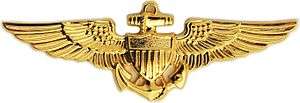Robert F. Willard
| Robert F. Willard | |
|---|---|
 | |
| Born |
December 5, 1950 Bell, California, U.S. |
| Allegiance |
|
| Service/branch |
|
| Years of service | 1973–2012 |
| Rank |
|
| Commands held |
U.S. Pacific Command U.S. Pacific Fleet U.S. Seventh Fleet USS Abraham Lincoln (CVN-72) USS Tripoli (LPH-10) |
| Awards |
Defense Distinguished Service Medal Navy Distinguished Service Medal (3) Legion of Merit (4) Meritorious Service Medal (3) Navy Commendation Medal (4) |
Robert Frederick "Bob" Willard[1] (born December 5, 1950)[2] is a retired United States Navy admiral who last served as the 22nd Commander, U.S. Pacific Command from October 19, 2009[3] to March 9, 2012. He previously served as Commander, U.S. Pacific Fleet from May 8, 2007 to September 25, 2009.[4][5] Prior to that, he served as the 34th Vice Chief of Naval Operations from March 18, 2005 to April 2007. On March 9, 2012, Admiral Willard retired from the Navy after 39 years of service. On May 9, 2012, he was elected president and chief executive officer of the Institute of Nuclear Power Operations, succeeding retired Navy admiral James O. Ellis, Jr.
Navy career
Willard is a Los Angeles native. In 1969, he graduated from East Longmeadow High School in East Longmeadow, Massachusetts and received a Bachelor of Science degree from the United States Naval Academy in 1973. He also holds a Master of Science degree in engineering management from Old Dominion University and was a fellow at MIT's Seminar XXI.
An F-14 naval aviator, Willard served consecutively in Fighter Squadron 24 (VF-24), Fighter Squadron 124 (VF-124), and Fighter Squadron 2 (VF-2) at NAS Miramar, deploying aboard USS Constellation (CV-64), USS Ranger (CV-61), and USS Kitty Hawk (CV-63). He then joined Navy Fighter Weapons School Top Gun as Operations Officer and Executive Officer, as well as aerial coordinator for the Paramount film Top Gun.
In 1987, Willard reported to Fighter Squadron 51 (VF-51), where he served as Executive Officer and Commanding Officer of the Screaming Eagles, embarked in USS Carl Vinson (CVN-70). He subsequently attended Navy Nuclear Power Training before rejoining Carl Vinson as Executive Officer. Willard then commanded the flagships USS Tripoli (LPH-10) and USS Abraham Lincoln (CVN-72) in various operations including Somalia, and the Persian Gulf.
As a flag officer, Willard has served on the Joint Staff as Deputy Director for Operations (Current Readiness and Capabilities); Commander, Carrier Group Five embarked in USS Kitty Hawk (CV-63); Deputy and Chief of Staff, Commander in Chief, U.S. Pacific Fleet in Pearl Harbor, Hawaii; Commander, Seventh Fleet, embarked in USS Blue Ridge (LCC-19) in Yokosuka, Japan; and Director for Force Structure, Resources and Assessment (DJ8) on the Joint Chiefs of Staff. From March 2005 to April 2007, Willard was the 34th Vice Chief of Naval Operations. After, he was the commander of U.S. Pacific Fleet from May 8, 2007 until September 25, 2009 when he was relieved by Admiral Patrick M. Walsh. As the Commander, U.S. Pacific Fleet, he was responsible for the world’s largest fleet command, encompassing 100,000,000 square miles (260,000,000 km2) and more than 170 ships and submarines, 1,300 aircraft, and 122,000 Sailors, Reservists and civilians.
Popular culture
Willard appeared in and was a consultant for the 1986 film Top Gun. He pilots the MiG-28 that receives "the bird" from Goose and Maverick. His callsign is "Rat," and his podcast is called the Rat-Pac Report.
In March 2010, a video in which Rep. Hank Johnson expressed his concern to Willard that the island of Guam might "capsize" and "tip over" went viral, garnering hundreds of thousands of views from thehill.com, hotair.com and latimes.com and was ultimately seen over three millions times.[6] Willard reassured the Congressman, "we don't anticipate that," for which he received wide popular admiration.[7][8][9]
Awards and decorations
 |
 |
References
- 1 2 '外国人叙勲受章者名簿(平成24年)' (Japanese)
- ↑ https://fas.org/irp/congress/2009_hr/nominate.html
- ↑ Keating Passes Pacom Torch to Willard
- ↑ U.S. Pacific Fleet Public Affairs (May 17, 2007). "Williard assumes command of U.S. Pacific Fleet". The Dolphin.
- ↑ MCC(SW) Stefanie Sealy (September 25, 2009). "Walsh Takes Helm of U.S. Pacific Fleet" (PDF). United States Pacific Fleet Public Affairs Office. Retrieved September 28, 2009.
- ↑ Video on YouTube
- ↑ http://web.archive.org/web/20100704190706/http://latimesblogs.latimes.com/washington/2010/03/hank-johnson-guam-.html
- ↑ http://hotair.com/archives/2010/03/31/dem-congressman-if-guam-gets-too-overpopulated-it-might-tip-over/
- ↑ http://washingtonscene.thehill.com/in-the-know/36-news/3169-rep-hank-johnson-guam-could-tip-over-and-capsize#disqus_thread
- ↑ Honorary Officer of the Order of Australia, Commonwealth of Australia Special Notices Gazette, 7 March 2012.
- This article contains material from the United States Federal Government and is in the public domain.
External links
![]() Media related to Robert Willard at Wikimedia Commons
Media related to Robert Willard at Wikimedia Commons
| Military offices | ||
|---|---|---|
| Preceded by Timothy J. Keating |
Commander of the United States Pacific Command October 19, 2009 - March 9, 2012 |
Succeeded by Samuel J. Locklear |
| Preceded by John B. Nathman |
Vice Chief of Naval Operations 2005 – 2007 |
Succeeded by Patrick M. Walsh |